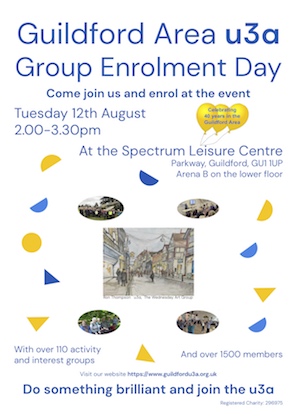- Tuesday, June 24, 2025
- Stay Connected
 Abraham Lincoln
If given the truth, the people can be depended upon to meet any national crisis...
Abraham Lincoln
If given the truth, the people can be depended upon to meet any national crisis...
 Guildford news...
for Guildford people, brought to you by Guildford reporters - Guildford's own news service
Guildford news...
for Guildford people, brought to you by Guildford reporters - Guildford's own news service
Guys’ Story Tells Many Aspects of Town’s Past
Published on: 8 Mar, 2012
Updated on: 13 Mar, 2012
 Gavin Morgan, the author of the book ‘The Guildford Guy Riots’, adds further reasons why he supports the plan for the bonfire sculpture on the roundabout near the police station and law courts.
Gavin Morgan, the author of the book ‘The Guildford Guy Riots’, adds further reasons why he supports the plan for the bonfire sculpture on the roundabout near the police station and law courts.
I think the proposed bonfire sculpture on the Woodbridge Road roundabout in Guildford is a great opportunity that will encourage people to explore the town’s past.
Public art has the ability to make us reflect on ourselves, challenge our views and see our world from different angles. The artist was drawn to the story of the bonfire because it has many dimensions.
In my book The Guildford Guy Riots I put the events of bonfire night in perspective and showed how they could be used to reflect on the development of the town. First of all the bonfire was not all about riot and mayhem. It was a community event (albeit a boisterous one) that attracted some unruly elements, as such events do. The riots were an unjustified response to attempts to suppress the bonfire. (For evidence, see the article “How riotous were the Guys?” on my website – www.caltropica.co.uk).
For me, the story of the bonfire helps define what it means to be a Guildfordian. Guildford is seen as a polite commuter town set in beautiful countryside and surrounded by some lovely villages. The story of the Guildford bonfire pulls both these aspects of the town together. It takes one on a journey back to the early 19th century when Guildford was a market town with pigs and sheep being sold in the High Street.
It was an age when the quaint rural cottages that now have swimming pools in the garden and Range Rovers on the drive were the humble dwellings of farm labourers.
My efforts to understand the boisterous behaviour on bonfire night took me to the workhouse and the backstreets of town. Times were hard. Those in work were often poor and those out of work had the terrifying ordeal of the workhouse to face. Small wonder they let their hair down on bonfire night.
I also wanted to understand why the town did not do more to stop the riots. I discovered a dysfunctional town council more interested in cutting costs than enforcing the law and keen to turn a blind eye to the Guys. It was nothing like the developed local authority of today.
The story continued to colourful events such as the celebrations for the wedding of the Prince of Wales and St Catherine’s Hill Fair. Finally the town’s victory over the Guys marked for me it’s coming of age. The town became proud of its status as respectable town and this has become ingrained in our culture
History puts our world in perspective. By comparing and contrasting similar situations we can learn so much. Why is it that Lewes in Sussex, a similar town in the 19th century, which had its own bonfire riots, embraced the bonfire tradition?
Today residents of Lewes burn effigies of unpopular politicians on November 5th and are proud of the fact that they question authority. In Guildford we are quite the opposite. We rejected the Guys. We are proud to respect authority. For me the Guildford Guys explains how this came about and why we are the way we are.
Guildford has a rich heritage of architecture and has many fine statues to the great and good but there is more to a town’s past than famous people and beautiful landmarks. Here on our doorstep we have a story that can challenge and inspire. It is not just about hooliganism but it provides an opportunity to debate the damage it does to society.
The story is also about popular culture, poverty, the role of local authorities, the challenges of maintaining law and order. It covers many aspects of our towns past and we should seize this opportunity encourage our children to explore it. Come on Guildford. What you think?
The proposal for the bonfire sculpture is a gift to the town from EA Games, under a Section 106 agreement. I am not part of the project but the proposal takes it inspiration from my book.
The sculptor has picked up on the theme of my book which shows how Guildford bonfire was a big community event that turned into riots when the town tried to suppress the event.
I am keen to hear from other people interested in promoting the enjoyment and understanding of history and see what their views are. I would like to think that we could use this sculpture as a springboard for education, tourism and community events. Some ideas are: an education pack for schools, a community play and an exhibition.
I would be interested to hear what views you might have and perhaps have a conversation with you. Please visit my website (http:www.caltropica.co.uk) to find out more.
Gavin Morgan














Recent Comments